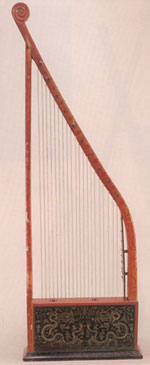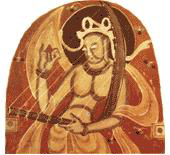| Art Q&A > Music |
|
|
Konghou
Konghou, also called Kanhou, is an ancient plucked stringed instrument in China. There are mainly three kinds of Konghou: one is played lying flat, one is played upright and another one is the phoenix-headed Konghou.
As early as the Spring and Autumn (770-476BC) and Warring States (475-221BC) period, there appeared the rudiment of Konghou played lying flat in the Chu Kingdom in southern China.
Konghou played upright appeared in the Eastern Han Dynasty (25-220) and got popular in the Sui (581-618) and Tang (618-907) dynasties. It was generally played in rites and ceremonies.
The phoenix-headed Konghou was introduced from India to the Central Plains of China in the Eastern Jin Dynasty (317-420), and was prevalent in the Sui and Tang Dynasties.
|
||||||
All rights reserved. Reproduction of text for non-commercial purposes is permitted provided that both the source and author are acknowledged and a notifying email is sent to us. |
||||||
 |

